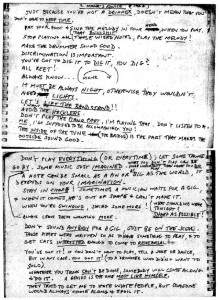So then what ..
A question has been asked by a regular reader of this blog; given the accumulated specialty knowledge underpinning and being produced by the writing on here..what are we going to do with it?
Theres a Jackie Chan video on a previous entry. It reminds me of an earlier movie of his called Battle Creek Brawl. In it his father repeatedly asks him to give up his pursuit of martial training and commit to the family business. Jackie’s character is unconvinced by this future and pursues his training with his Uncle. Eventually an opportunity arises whereby Jackie could win a lot of money if he wins an open tournament in Battle Creek, Texas. Of course he does win it, winning money, the honour of his family , the respect of his Uncle who trained him, and of course his father see’s that there is some financial reward in his art. Oh yes and Jackie gets the girl too.
When I originally pursued dance it was an emancipatory act. From there choosing improvisation was also an emancipatory choice, a freedom of sorts. As a younger man the lack of fiscal rewards were of no consequence to me. Now I’m at a loss to explain out loud why this pursuit is so deeply important.
It doesn’t get me paid, or laid. There is little recognition from within the dance world and certainly not from within broader Western culture. I get mystified and sympathetic comments from academic peers. And few people know how to even begin discussing the practice with any degree of cogent or informed perspective.
So why improvise? What are its applications? Why is it important now? These questions are still as persistently present, still as boring, and still as hard to answer as they were when I first started. In fact as I age they seem to harder to justify and to qualify. And yet its what I do. Its where I call home. And I just don’t know what I’m going to do with it. I never have.

